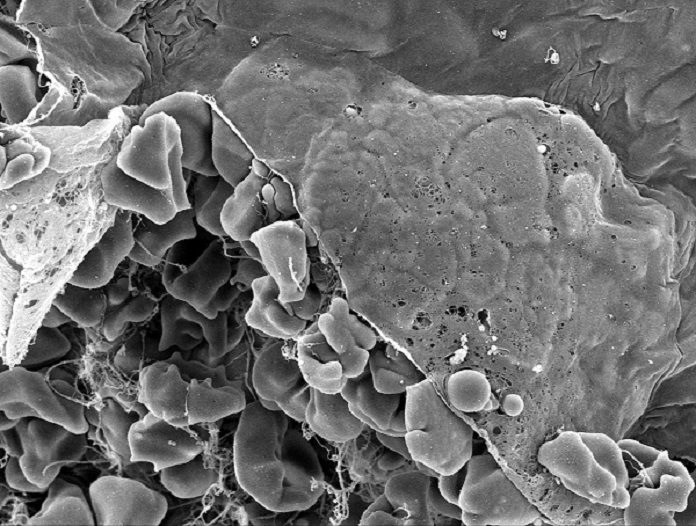Researchers have discovered that a protein film forms quickly over an injury as a major aspect of the natural clotting procedure, and it gives insurance to no less than 12 hours.
According to them, this bio-film gives the immune system time to marshal its barriers to managing any contamination.
The analysts likewise observed that oil-based substances disturbed the procedure and caution that treating breaks in the skin with petroleum jelly, a method utilized as a part of some contact stores and following minor medical procedure, may build the danger of disease.
The study, involving an international collaboration of scientists led by the University of Leeds and published in the Journal of Clinical Investigation, changes scientific understanding of the mechanism of blood clotting.

Clotting is a vital process to prevent life-threatening blood loss following an injury. At the site of the wound, platelets and red blood cells clump together to try and plug any hemorrhage.
Seen through an electron microscope, clots appear, by all accounts, to be coincided together by spaghetti-like fibers of a protein called fibrin. For a decade researchers have been baffled about the exact structure of the fibrin fibers since they seemed to be never-ending, simply winding themselves around the platelets and red blood cells.
The electron microscope images also revealed that the film had ‘breathability’ properties, allowing air to reach the wound through tiny pores which were too small to allow bacteria and some virus to pass through.
Professor Jeremy Pearson, our Associate Medical Director, said: “By looking at how blood clots form, with a view to designing better clot-busting drugs to treat heart attack patients, this team have now discovered a previously unknown protection mechanism used by our bodies to prevent infection after an injury.
“This discovery perfectly portrays the complex, and sometimes contradictory nature of our bodies, in that the very substance which can make blood clots inside our body so dangerous can also protect us from harm when we wound ourselves.”
